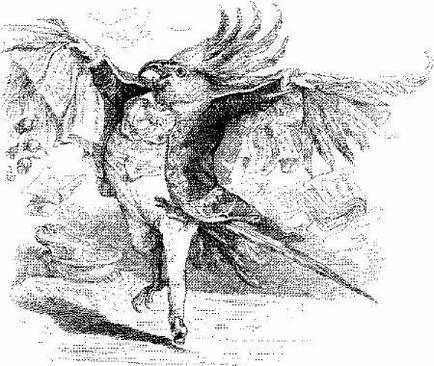 By Kristina Wojtaszek. At the time of their origins, fairies were not the winged little Tinkerbells we think of today. They ranged, in fact, from mythical beings, nature spirits and elves to diminished gods and goddesses and even ghosts. None of these creatures commonly had wings, other than the god Apollo and a few mythical creatures like dragons and the pegasus. So how, and why, did fairies get their wings? It all seems to have started in the Victorian era. At that time, advances in science and the growing population resulted in more people living closer together rather than spread out on distant farms. Social and religious conformity also led to the abandonment of many old legends and pagan-inspired beliefs. It was also a time when the general public took more of an educated interest in the natural world, many taking up the respectable hobbies of bird watching and collecting plants and insects. The cultivation of formal gardens meant a kind of taming of the wilderness, so that wildlife could be viewed from a more controlled setting. In this new atmosphere, old beliefs in fearful spirits that could cause trouble to the farming family or those lost in the wilderness began to subside, and instead, became the stuff of children's tales. In a sense, we grew out of fairies, though we never quite escaped their enchantment. As fairies became better suited for the nursery, so their portrayal took on a more childlike, whimsical quality, including cherubim-like faces, a greatly diminished size, and insect or bird-like wings. They were also more closely associated with flowers, music and mischief rather than demons, illness and death. If fairies originally evolved from our deeper fears, they later grew smaller and much less menacing as we began to identify and tame the natural world. And wings, apparently, were just another way to classify fairies, as one might use wings to identify an insect. In effect, both fears and fairies were neatly domesticated.  Kristina Wojtaszek grew up as a woodland sprite and mermaid, playing around the shores of Lake Michigan. At any given time she could be found with live snakes tangled in her hair and worn out shoes filled with sand. She earned a bachelor’s degree in Wildlife Management as an excuse to spend her days lost in the woods with a book in hand. She currently resides in the high desert country of Wyoming with her husband and two small children. She is fascinated by fairy tales and fantasy and her favorite haunts are libraries and cemeteries. . Her Snow White retelling Opal is available from World Weaver Press, and she's contributed to Fae and Specter Spectacular: 13 Ghostly Tales. Follow her @KristinaWojtasz or on her blog, Twice Upon a Time.
0 Comments
Your comment will be posted after it is approved.
Leave a Reply. |
World Weaver PressPublishing fantasy, paranormal, and science fiction. Archives
February 2024
|
- Home
-
Books
-
All Books
>
- Beyond the Glass Slipper
- Bite Somebody
- Bite Somebody Else
- Black Pearl Dreaming
- Cassandra Complex
- Causality Loop
- Clockwork, Curses, and Coal
- Continuum
- Corvidae
- Cursed: Wickedly Fun Stories
- Dream Eater
- Equus
- Fae
- Falling of the Moon
- Far Orbit
- Far Orbit Apogee
- Fractured Days
- Frozen Fairy Tales
- Glass and Gardens: Solarpunk Summers
- Glass and Gardens: Solarpunk Winters
- Grandmother Paradox
- Grimm, Grit, and Gasoline
- Haunted Housewives
- Heir to the Lamp
- He Sees You When He's Creepin': Tales of Krampus
- Into the Moonless Night
- Jack Jetstark's Intergalactic Freakshow
- King of Ash and Bones (ebook)
- Krampusnacht
- Last Dream of Her Mortal Soul
- Meddlers of Moonshine
- Mothers of Enchantment
- Mrs Claus
- Multispecies Cities
- Murder in the Generative Kitchen
- Recognize Fascism
- Scarecrow
- Sirens
- Shards of History
- Shattered Fates
- Skull and Pestle
- Solarpunk (Translation)
- Solarpunk Creatures
- Solomon's Bell
- SonofaWitch!
- Speculative Story Bites
- Trenchcoats, Towers, and Trolls
- Weredog Whisperer
- Wolves and Witches
- Anthologies and Collections
- Novels
- Novellas
- Fairy Tale
- Fantasy
- Romance
- Science Fiction
- Urban/Contemporary Fantasy
- Young Adult SFF
-
All Books
>
- Blog
- About
- Contact
- Press / Publicity
- Newsletter Signup
- Privacy Policy
- Store





 RSS Feed
RSS Feed